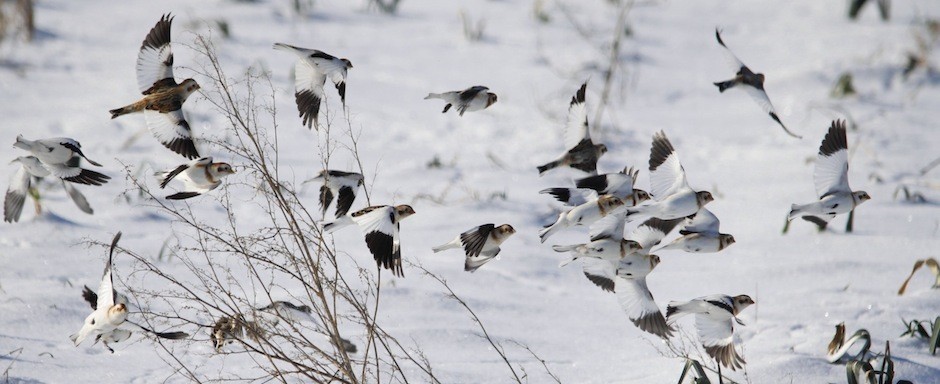Sandy Turner’s daughter, Emma, found “Red”, a Red-winged Blackbird, in a nest that was hidden in a Phragmites stand that was being eradicated. She rescued the, then, very young nestling and took her home for Sandy to nurture. Now usually these stories don’t work out well for the bird but this wasn’t the case for Red. Sandy was able to feed the youngster worm pieces and mealworms, keeping it alive….and thriving. In so doing Red imprinted on Sandy and became one of the family so to speak. Sandy keeps the bird in a cage to transport it between her home in Dundas and her work at Ruthven but lets Red out to explore. So far (and it’s been two weeks or so) Red will return to the cage (or to Sandy) when she’s tired or when Sandy calls. Frankly, I was amazed when I “met” Red – she was checking out the bushes in front of the banding lab but when Sandy called her (chirp, chirp – seriously), the bird flew right to her to inspect the Tupperware container for more wormy bits. It won’t be long now until the bird “fledges”; it will be interesting to see how she takes to the wild.
We were out banding this morning, trying to sample the young birds that are fledging now in good numbers. Today our biggest catch was Yellow Warblers – we banded 9, all young birds. I think that most (if not all) have been abandoned now by their parents. It’s sink or swim time for these youngsters. They will move around for awhile in the area, checking out things for next year but soon they will be heading south (already!!). Meanwhile their parents will start a complete moult before they, too, head south. The Summer is drawing to a close folks.

Two young Yellow Warblers. The one on the right still has much of its grey juvenal plumage indicating that these birds were hatched at least a week apart.

A very noticeable “fault bar” runs across this young Yellow Warbler’s tail. Fault bars indicate a period of nutritional distress when it was growing.
We witnessed a movement of swallows throughout the morning. We saw all 6 species but the most numerous was the Bank Swallow. We didn’t get a very good count on individual species as they often were very high or just zipping through (and we were busy) but I would roughly estimate the overall number to be well over 300. They are on their way south as well.
Most of the young Purple Martins have now been banded; some have fledged. It won’t be long before they will be gone as well. We witnessed chases by juveniles of parents who were holding food. It would be interesting to know if the young birds just wanted to be first to the food or the parent was using the food to entice the young birds to fly.

A young female Blue-winged Warbler. On her way to Central America, she has only about a 20% chance of returning next Spring.

We frequently catch Ruby-throated Hummingbirds in the nets. Weighing just 3 grams it’s a wonder they can migrate all the way to Mexico.
Banded 32:
2 Purple Martins (from the nest boxes)
1 White-breasted Nuthatch
3 Eastern Bluebirds (from a nest box)
2 American Robins
1 Gray Catbird
2 Red-eyed Vireos (both adults)
1 Blue-winged Warbler
9 Yellow Warblers
1 Ovenbird
1 Rose-breasted Grosbeak
5 Song Sparrows
1 Red-winged Blackbird (“Red” – we banded her)
3 Baltimore Orioles
Rick



